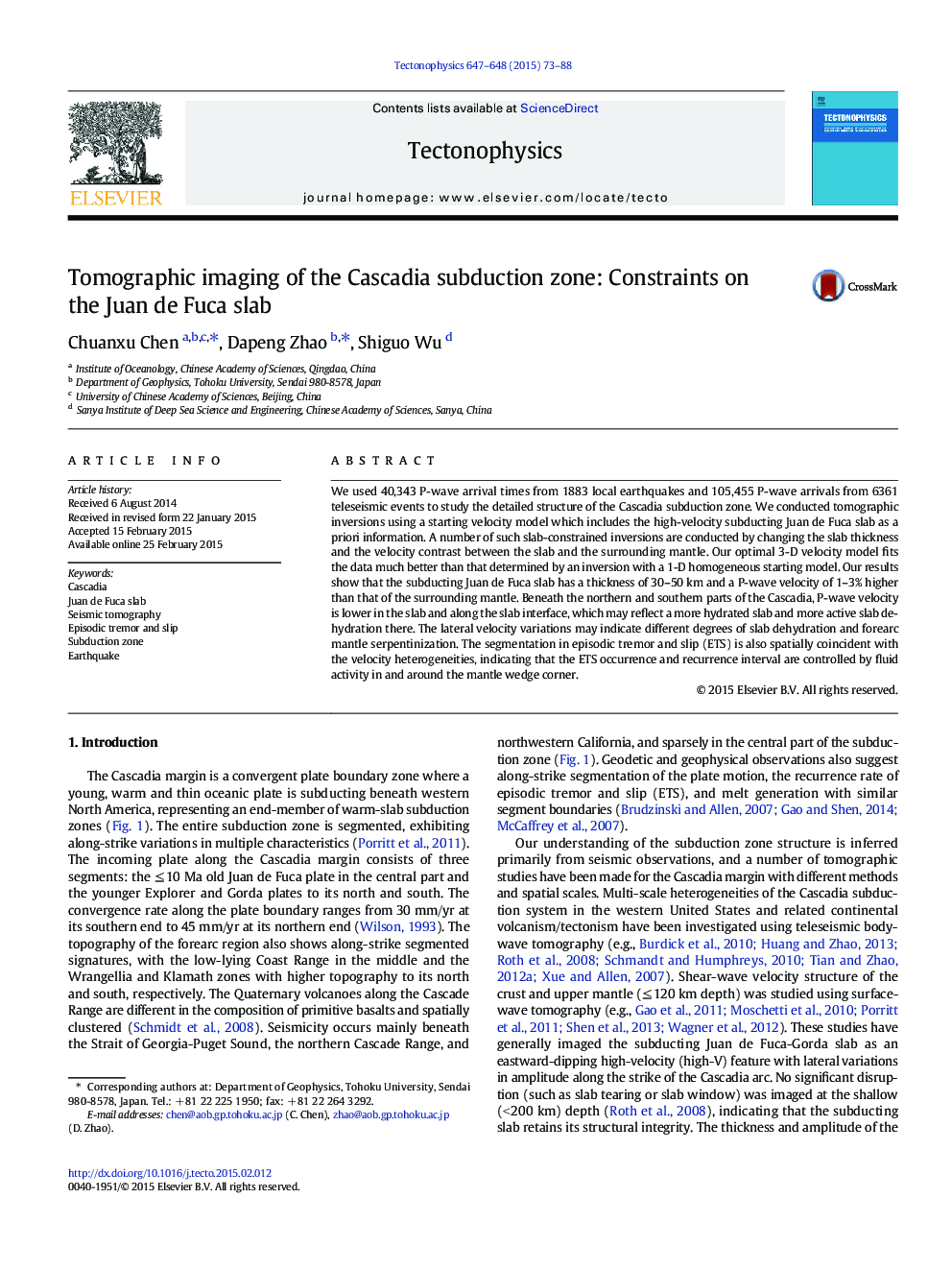| Article ID | Journal | Published Year | Pages | File Type |
|---|---|---|---|---|
| 4691692 | Tectonophysics | 2015 | 16 Pages |
•Both local and teleseismic data are used to determine P-wave tomography.•The Juan de Fuca slab is taken into account in the tomographic inversion.•The Juan de Fuca slab is 30–50 km thick and its Vp is 1–3% faster.•Segmentation in ETS coincides with Vp variations along the Cascadia margin.
We used 40,343 P-wave arrival times from 1883 local earthquakes and 105,455 P-wave arrivals from 6361 teleseismic events to study the detailed structure of the Cascadia subduction zone. We conducted tomographic inversions using a starting velocity model which includes the high-velocity subducting Juan de Fuca slab as a priori information. A number of such slab-constrained inversions are conducted by changing the slab thickness and the velocity contrast between the slab and the surrounding mantle. Our optimal 3-D velocity model fits the data much better than that determined by an inversion with a 1-D homogeneous starting model. Our results show that the subducting Juan de Fuca slab has a thickness of 30–50 km and a P-wave velocity of 1–3% higher than that of the surrounding mantle. Beneath the northern and southern parts of the Cascadia, P-wave velocity is lower in the slab and along the slab interface, which may reflect a more hydrated slab and more active slab dehydration there. The lateral velocity variations may indicate different degrees of slab dehydration and forearc mantle serpentinization. The segmentation in episodic tremor and slip (ETS) is also spatially coincident with the velocity heterogeneities, indicating that the ETS occurrence and recurrence interval are controlled by fluid activity in and around the mantle wedge corner.
